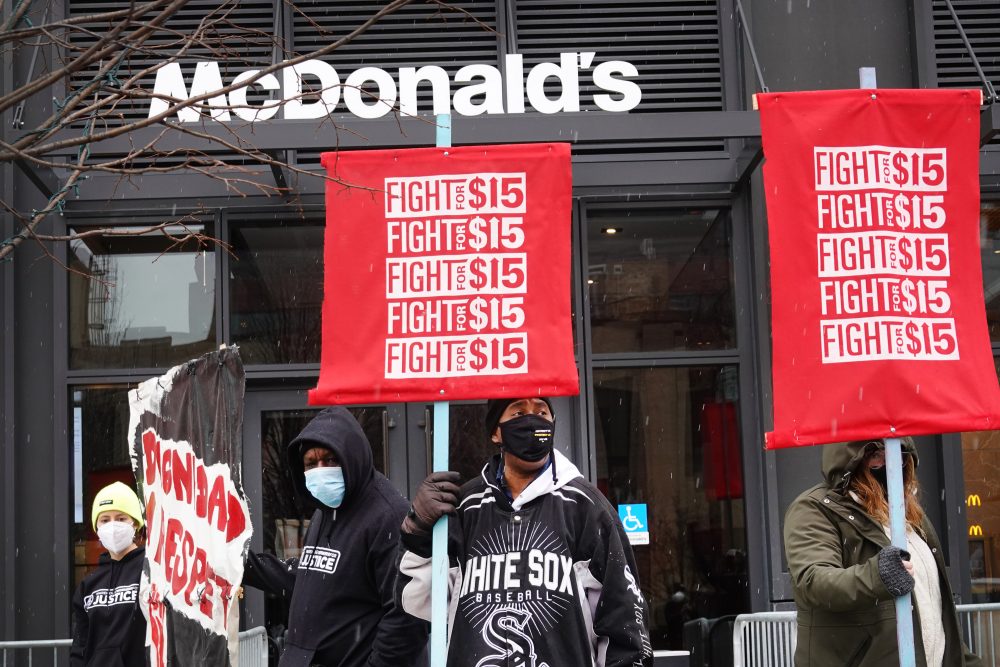
MATT ARENA – OCTOBER 30TH, 2019 EDITORS: DAVID LYU, SHAWN SHIN, PARMITA DAS
The hype is pervasive. We see it on supermarket shelves and in both fast and upscale restaurants. But just five years ago, consumers would not have heard of Impossible Foods and Beyond Meat, the current two US plant-based meat giants. Currently, both companies have provided enough growth potential and high revenue margins to soon make significant impacts on America’s diet. Through these start-ups, we can fastrack a shift towards eating less meat, which can improve our national health and make a sizable impact in our GreenHouse Gas (GHGs) emissions. Barclays believes that the animal-free meat industry could capture about 10% of the $1.4 trillion global meat industry within a decade. To meet and exceed this standard, policy supporting the much-needed development of plant-based meat and cultured meat will need to expand.
The Meat Industry’s Failure
Demand for meat is rising, observed at a growth of 1.2% last year. With such a large growth rate, there is a lot of pressure to keep the supply rising to meet demand. In addition to the ever-growing demand for meat, the most basic economic failure in the global industrial meat complex is that it contributes to about 15% of greenhouse gases. A lot of this is due to the energy required to feed animals. Generally, about 90% of the energy is lost as it moves through the food pyramid (e.g. grain to cattle), meaning meat is about 10% as energy efficient as its plant alternatives to consume. Other sources of GHGs include energy required to operate expensive machinery in industrial ranches and slaughterhouses, as well as the gases directly from the animals themselves. The GHG problem is even more pervasive when compared to its non-meat alternatives: plant-based meats have a carbon footprint 89% less than a beef burger. In order to combat the various problems that the meat industry created, some solutions were proposed; a notable example was the meat tax.
The meat tax was proposed on the rationale that red-meat in particular is a carcinogen leading to diabetes and stroke. An analysis of the tax estimated that it could save an estimated 53,000 lives in the US. However, one criticism of the meat tax is that it would disproportionately affect people with lower income. The own-price elasticity, which measures consumers’ sensitivity to price changes, of all meats is -0.31, meaning a tax will likely not noticably decrease consumption. This is troubling for consumers, as they cannot afford to cut meat from their diets; this would directly lead to consumers being disproportionately affected by the tax, while the meat industry would be relatively unaffected. This isn’t to say that a tax wouldn’t be effective in some regards, but it still will heavily put consumers at a disadvantage. Therefore, there needs to be a viable alternative to meat that is similarly cost-competitive, so that consumers are incentivized to shift consumption habits—and meatless meat may be our answer.
A Consumer-Friendly Solution
Impossible Food and Beyond Meat, if scaled correctly, can almost certainly become an alternative that produces none of the aforementioned externalities, while sacrificing little taste. Currently, the number of meat-alternative products has been skyrocketing—with a yearly growth of 15.4% between 2013 and 2018. In addition, NPD Group notes that “There were 228 million servings of veggie burgers and veggie sandwiches ordered at QSRs (Quick Service Restaurants) in the year ending May, up 10 percent from a year ago.” Although it is true that meatless meat still has a while to go before becoming mainstream (6.4 billion beef burgers were served during the same timeframe), the early adaptations seem promising.
The fastest way for these products to become widely established is through restaurant partnerships. Impossible Foods has recently signed partnerships with Burger King, Qdoba, and White Castle to start offering meatless products, while Beyond Meat has partnered with Subway, Carl’s Jr., and McDonalds. However, the biggest, yet relatively unknown, victories are the partnerships that the two firms have scored with food giants Sodexo, and Amarak. Both food conglomerates serve hospitals, ball parks, office cafes, and schools. The contract will allow distribution to heavily increase in scale. For example, Sodexos contract with Impossible Foods will allow Impossible Food dishes to be sold in 1,500 locations.
These partnerships have potential benefits for all parties. Currently, Impossible Foods and Beyond Meat have to sell their products in supermarkets at a premium compared to traditional meats: Beyond Meat Burgers are 140% more expensive than beef patties at $12 a pound, while their pork-like sausage is 70% more expensive than its meat counterpart. Impossible Foods is not any better; their pound of ground ‘beef’ sells at $12 a pound. Restaurants, and particularly QSRs, generally offer lower premiums than supermarkets. At Burger King, a beef Whopper is priced at $4.19, while the Impossible Whopper sells at $5.59, only a 33% premium. At Red Robin, a standard burger costs $10 while their impossible burger sells at $13.50, a 35% premium. The opportunity cost for a consumer to eat meat that is cruelty-free, safe, and doesn’t generate any comparable environmental externalities is lowered significantly. Coupled with a meat tax and other federal programs, this could potentially offset burdens on Americans with lower incomes.
Why would restaurants sell these burgers at a lower premium than supermarkets? The answer is two-fold. Firstly, restaurant franchises can buy meatless meat at a larger scale, which is easier for the two companies to produce and package. Secondly, and most importantly, the rapid growth in the industry (15.4% compared to 1.2% for traditional meat) means that increased demand can overcome the lower revenue margins of the burgers. This makes the products both accessible and profitable, while providing enough revenue for the companies to reinvest in R&D.
Future hopes for plant-based and cultured meats continue to swell. The two main challenges facing Impossible Foods and Beyond Meat have been that they both suffer from inventory shortages and high prices. These problems are likely to dissipate within the next few years due to competition entering the marketplace, and continued investment in scaling up current processes. Just at the time of writing this article, nine other companies (Tyson, Nestle, Kroger, ConAgra, Kellog, Hormel Foods, Just, Jensen Meat Co., and Jimmy Dean) plan to launch meat-alternative products in the near future, many in the fall of 2019. More producers means three new things. Firstly, additional investment, especially from multinational corporations with access to abundant capital, will increase R&D and provide the necessary infrastructure to reduce marginal costs. Secondly, the alternative meat market will finally look somewhat competitive instead of operating at a near duopoly as it has done in the past. Lastly, the downwards pressure on price will be met with an abundant supply (provided supplemented existing food giants’ infrastructure that can produce on a large scale), also decreasing prices.
Assuming current trends continue, plant-based meat products present Americans with a strong alternative to environmentally damaging traditional meat. One day, it may be possible to walk into a supermarket and choose from the numerous delicious and carbon-neutral meat alternatives produced by the familiar brands we already know. Once we can create these delicious and cheap meat alternatives, who wouldn’t want to partake?
Featured Image Source: CNet
Disclaimer: The views published in this journal are those of the individual authors or speakers and do not necessarily reflect the position or policy of Berkeley Economic Review staff, the Undergraduate Economics Association, the UC Berkeley Economics Department and faculty, or the University of California, Berkeley in general.



